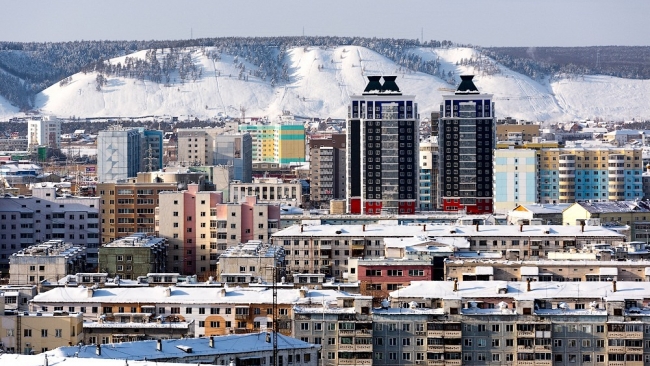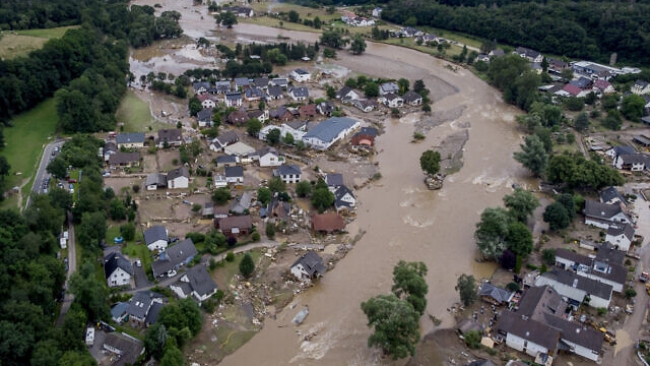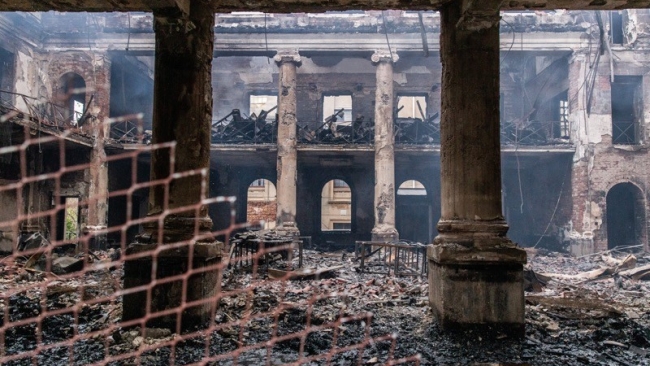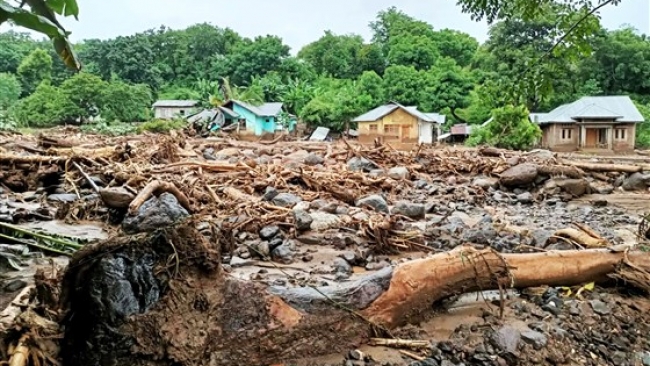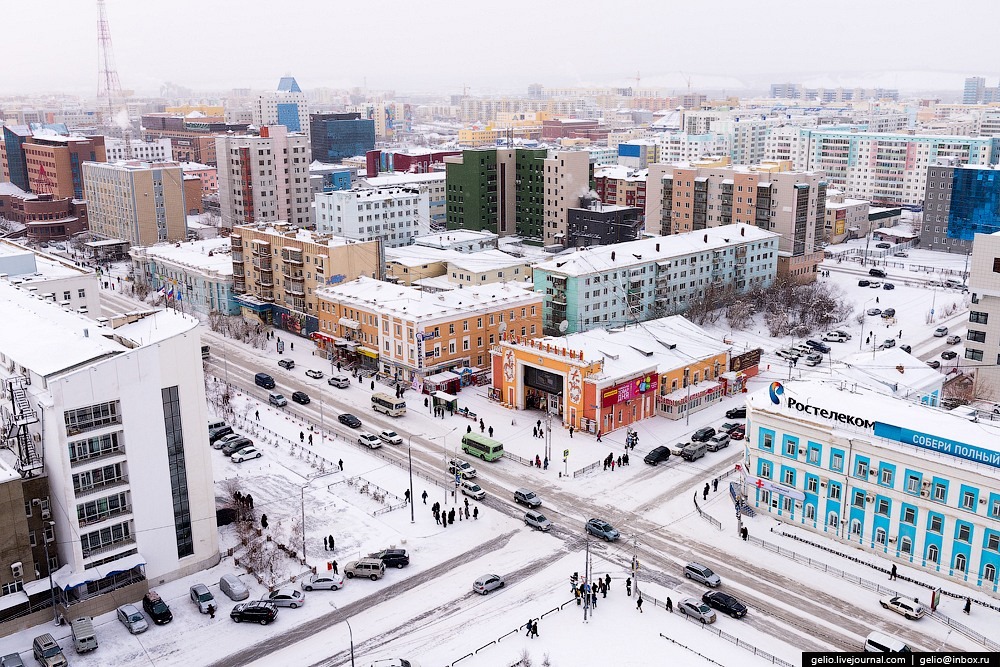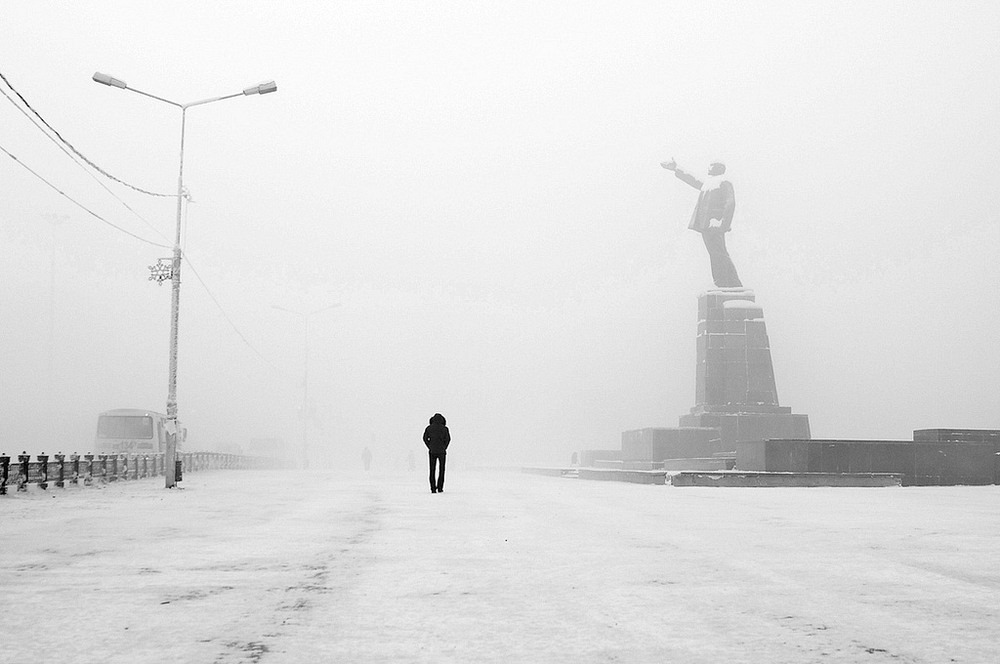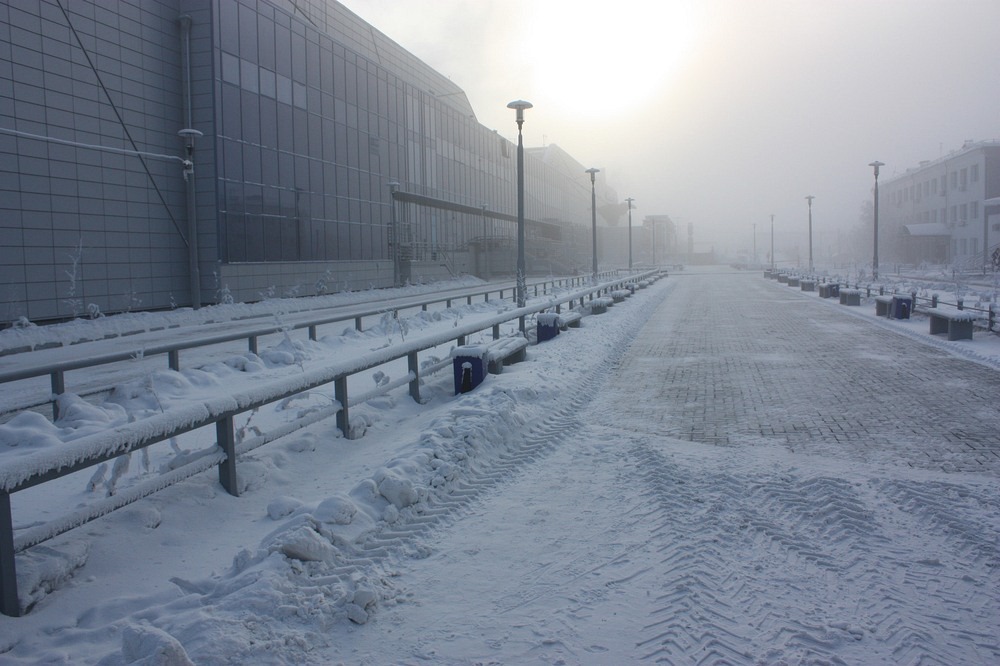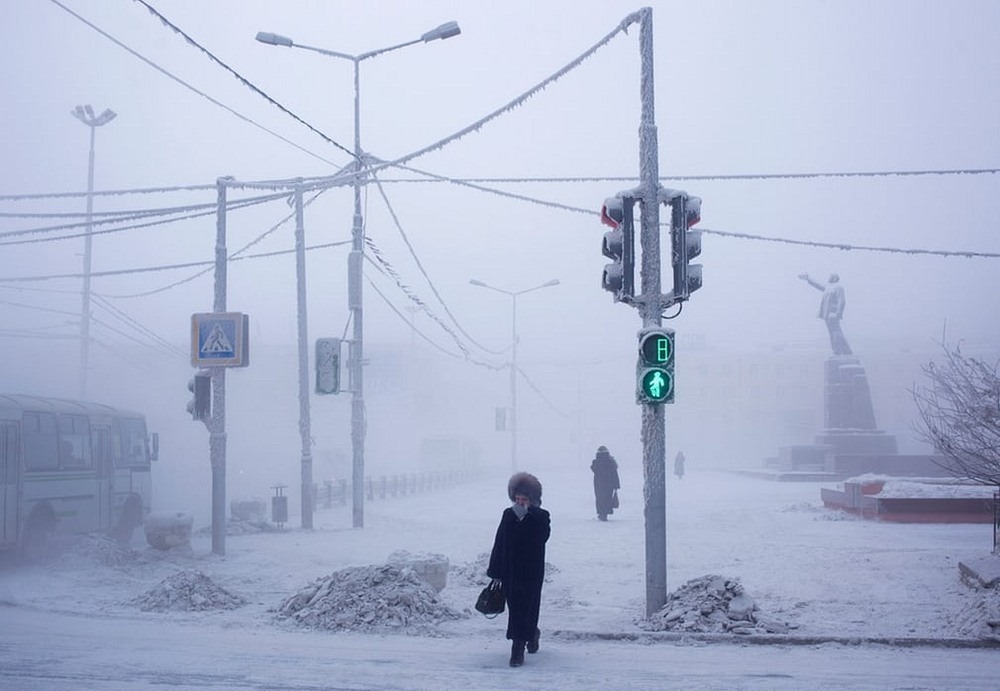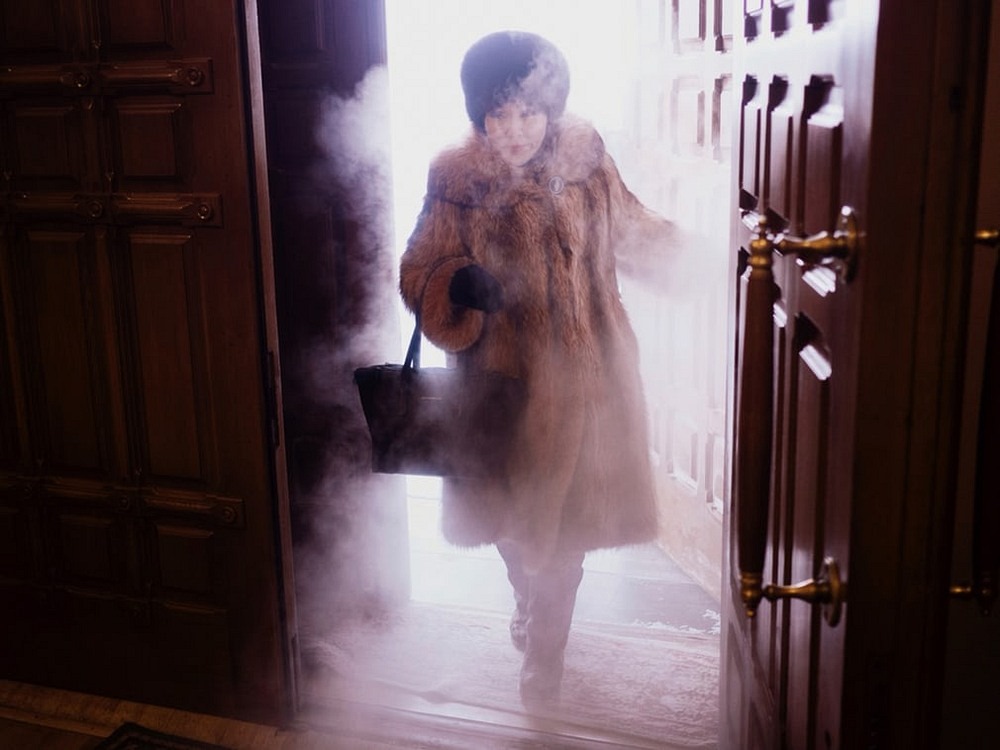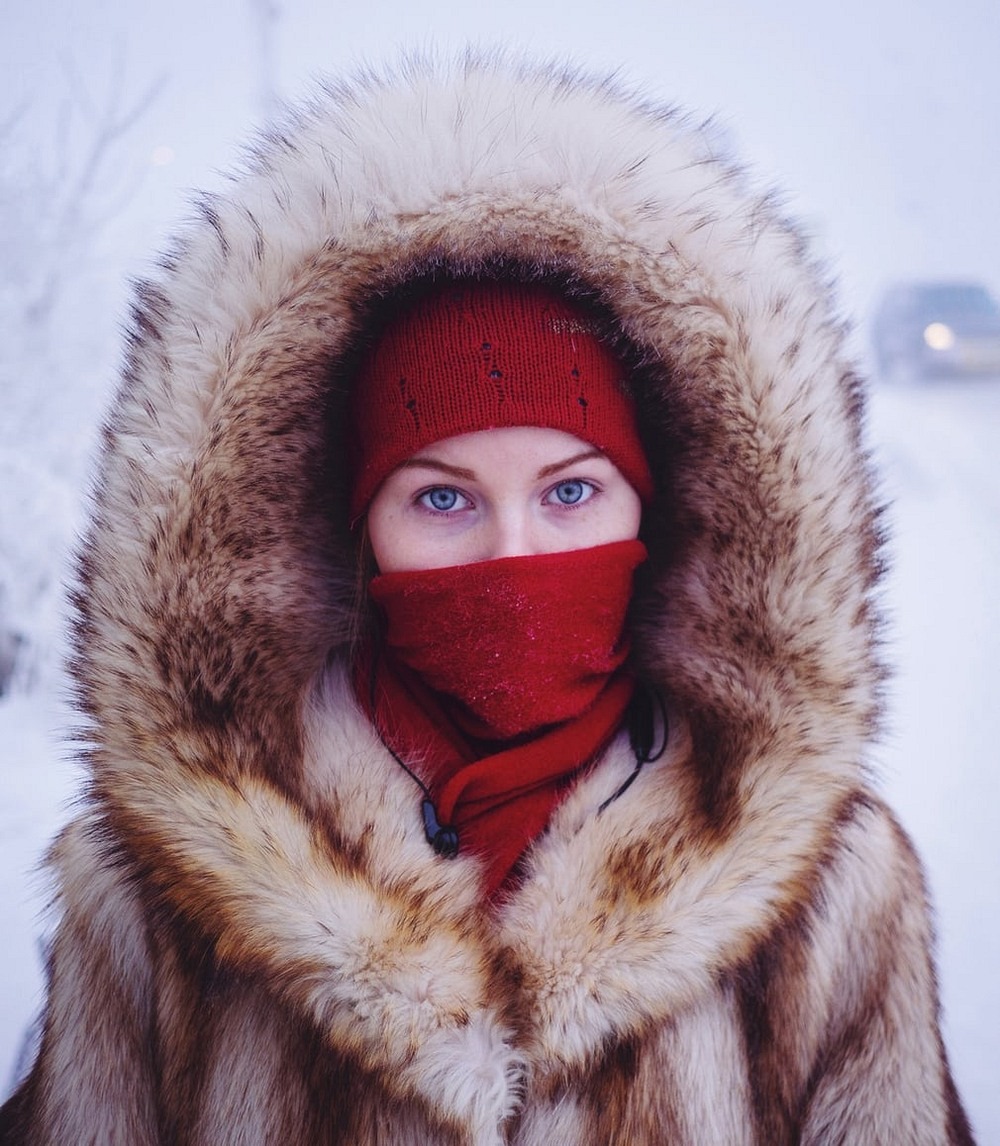Yakutsk: The Coldest City in the World
There are plenty of regions in Russia that can claim to be very remote and very cold, but none as extreme as Yakutia. It’s an enormous region in north-eastern Russia with an area roughly the size of India but with a population smaller than that of the US state of Rhode Island. Yakutia is well known for its extreme and severe climate, boasting some of the lowest temperatures ever recorded in the Northern Hemisphere. Two of the coldest inhabited places in the world—Verkhoyansk and Oymyakon—lie in Yakutia.
Oymyakon is a 500-people settlement, while Verkhoyansk is a former camp for political prisoners. None of them is a fully functioning city. Yakutia’s capital—Yakutsk—on the other hand, is home to over 280,000 people making it the coldest major city in the world. The average winter temperature here is minus 40 degree Celsius. The soil is permanently frozen, so most buildings are built on raised stilts.
Yakutsk is so remote it is six time zones away from Moscow, and two centuries ago, a journey between the two would have taken three months. Today, the city boasts of two airports with regular direct flights from major Russian cities, but flights often get delayed or cancelled because of fog. Most travellers find themselves stranded at Magadan, 2,000 km away via the notorious “Road of Bones”, the Kolyma Highway, built by Gulag inmates, many of whom died in the process.
The other option is to drive down the dilapidated Lena highway that was once awarded the dubious title of the “worst road in the world.” The last stretch of this journey requires a ferry crossing over the Lena River, which is possible in summer when it is not frozen. During winter, one can simply drive across the ice. In the months in between, when there is neither a clear path for a ferry nor ice strong enough to support the weight of a vehicle, there is no way to make the crossing.
So why do people live in such a godforsaken place? Because of diamonds, gold, silver, natural gas and pretty much every precious minerals. The region is extraordinarily rich in natural resources. According to local legend, god was flying around the world distributing riches and natural resources, but when he flew over Yakutia he got so cold that his hands went numb and he dropped everything. Ninety nine percent of all Russian diamonds and over twenty percent of all the diamonds mined in the world are mined in Yakutia.
The city was originally a small military outpost founded in 1632. Like many Siberian towns, it was used as an open prison where political prisoners were sent to exile. Yakutsk did not grow into a city until the discovery of large reserves of gold and other minerals in the 1880s. The readily available labor force from gulags helped Stalin develop these reserves extensively during the early 20th century industrialization of Russia. Over time, Yakutsk was transformed into a real city with hotels, cinemas, an opera house, universities, pizza delivery service, and even a zoo.
The biggest danger of living in Yakutsk is the extreme cold. When going out one needs to take extreme care to cover themselves from head to toe with as many layers of clothing as possible. It is easy to lose one’s nose or a couple of toes to frostbite if not careful. Fur is the only thing that keeps people reasonably warm. You can’t wear glasses because the metal frame sticks to your flesh. Stepping outside is a hazard, and so people limit exposure to nature as much as possible. Every outing is carefully planned, which means no unnecessary detours, no loitering or window-shopping. Walking is exhaustive in the cold, so residents prefer to take cars or taxis wherever they go. They leave the engines running while they shop because if the engine freezes it is nearly impossible to start the car again. Many photojournalist who went to Yakutsk reported their cameras freezing solid from the cold.
Despite the frigid winters, summers are surprisingly warm, with temperature sweltering in the high twenties and occasionally shooting past thirties. But its hardly a tropical paradise. During the brief summer, the air becomes humid and sticky, and there are swarms of midges and mosquitoes everywhere.
Academician Clifford Gaddy of the Brookings Institution believe that settlements such as Yakutsk aren’t fit for human habitation, and exist solely because of Russia’s arrogance and crazy 19th-century ideology that you don't really possess land unless you have people there. In the book The Siberian Curse, author Clifford Gaddy estimated that emergency fuel deliveries to Siberian towns alone cost about $470 million per year, and it would be much cheaper and more efficient, he says, to fly people in to work at the mines rather than have fully functioning cities in such conditions.
What Gaddy failed to see, however, is that Yakutia was inhabited for thousands of years before precious metals were discovered here. The now extinct Ymyakhtakh culture lived in the Lena river basin during the Late Neolithic period, and the present natives, Yakuts, have been living in the region since the 13th and 14th centuries. These people have developed remarkable adaptability to the weather. Henry Lansdell, a 19th century British traveller, who made a brief stop at Yakutsk on his way across Siberia, reported seeing native Yakut women “with bare arms, stand in the open-air markets, chattering and joking as pleasantly as if in genial spring."
If you can brave the cold, there is a bunch of interesting things to explore in Yakutsk, such as the Mammoth Museum, where is cryogenically preserved the complete head of a wooly mammoth, the National Art Museum, and the only museum in the world dedicated to permafrost.
Updated: Tue 29 May 2018 at 10:39
